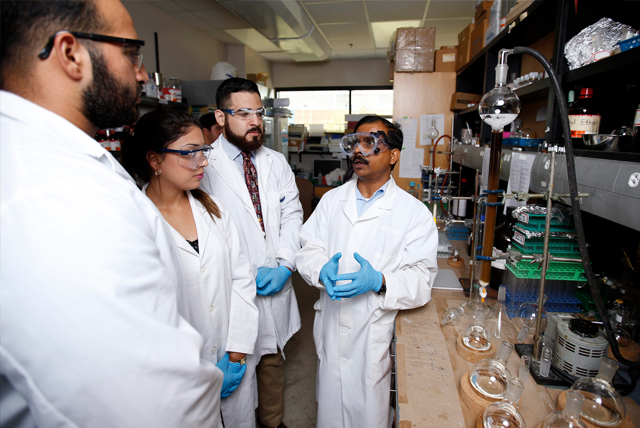Document Type
Article
Publication Date
3-2018
Abstract
Pseudomonas aeruginosa, an opportunistic pathogen, is highly susceptible to developing resistance to multiple antibiotics. The gene encoding aspartyl-tRNA synthetase (AspRS) from P. aeruginosa was cloned and the resulting protein characterized. AspRS was kinetically evaluated, and the KM values for aspartic acid, ATP, and tRNA were 170, 495, and 0.5 μM, respectively. AspRS was developed into a screening platform using scintillation proximity assay (SPA) technology and used to screen 1690 chemical compounds, resulting in the identification of two inhibitory compounds, BT02A02 and BT02C05. The minimum inhibitory concentrations (MICs) were determined against nine clinically relevant bacterial strains, including efflux pump mutant and hypersensitive strains of P. aeruginosa. The compounds displayed broad-spectrum antibacterial activity and inhibited growth of the efflux and hypersensitive strains with MICs of 16 μg/mL. Growth of wild-type strains were unaffected, indicating that efflux was likely responsible for this lack of activity. BT02A02 did not inhibit growth of human cell cultures at any concentration. However, BT02C05 did inhibit human cell cultures with a cytotoxicity concentration (CC50) of 61.6 μg/mL. The compounds did not compete with either aspartic acid or ATP for binding AspRS, indicating that the mechanism of action of the compound occurs outside the active site of aminoacylation.
Recommended Citation
Corona, A., Palmer, S. O., Zamacona, R., Mendez, B., Dean, F. B., & Bullard, J. M. (2018). Discovery and characterization of chemical compounds that inhibit the function of aspartyl-tRNA synthetase from Pseudomonas aeruginosa. SLAS DISCOVERY: Advancing Life Sciences R&D, 23(3), 294-301. https://doi.org/10.1177/2472555217744559
Creative Commons License

This work is licensed under a Creative Commons Attribution-NonCommercial-No Derivative Works 4.0 International License.
Publication Title
SLAS Discovery
DOI
https://doi.org/10.1177/2472555217744559



Comments
Under a Creative Commons license